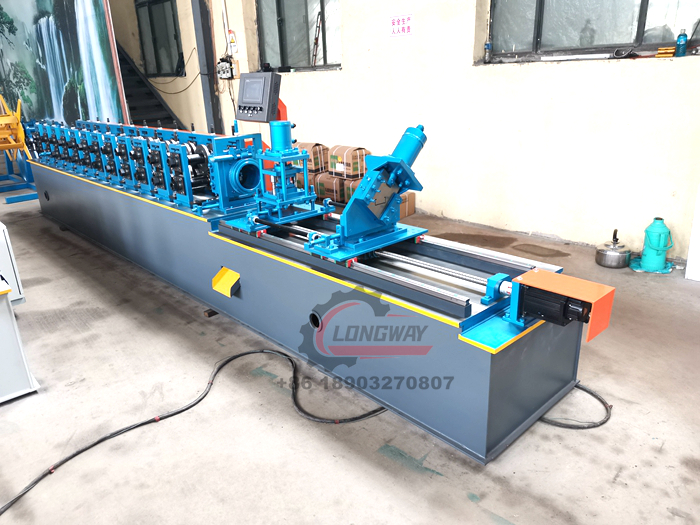Understanding the Cost Factors of Roll Forming Machines in Manufacturing
Understanding the Price of Roll Forming Machines
Roll forming machines are essential equipment in various industries, particularly in manufacturing sectors such as construction, automotive, and appliances. They are used to create metal products with various cross-sectional profiles, allowing manufacturers to produce components with precision and efficiency. However, one of the key considerations when investing in a roll forming machine is its price. Understanding the factors that influence the cost of these machines can help businesses make informed purchasing decisions.
Factors Influencing the Price of Roll Forming Machines
1. Machine Specifications The price of a roll forming machine is largely determined by its specifications, including the size, type, and complexity of the machine. Heavy-duty machines with advanced features tend to be more expensive than basic models. For instance, a machine capable of rolling thicker materials or producing more intricate profiles may come at a higher cost.
2. Type of Material Processed The type of material that the machine is designed to process also affects its price. Machines designed to work with high-strength materials or specific alloys may be constructed with more durable components, increasing the overall cost. Additionally, machines capable of accommodating a wider range of material thicknesses and widths will typically be priced higher.
3. Automation and Technology The level of automation incorporated into the roll forming machine plays a significant role in its price. Fully automated systems, which include computerized controls and advanced monitoring systems, are more expensive but can significantly increase production efficiency and reduce labor costs over time. In contrast, manual or semi-automated machines may be less costly but require more human intervention.
4. Production Capacity The production capacity of the machine is another crucial factor. Machines designed for high-volume production are usually more expensive due to their larger size, robust construction, and enhanced features that allow for faster processing speeds. Businesses should carefully evaluate their production needs to ensure they invest in a machine that aligns with their operational requirements.
price of roll forming machine

5. Brand and Manufacturer The reputation of the brand and the manufacturer also impact the price. Established manufacturers with a history of producing high-quality machines may charge a premium for their products. However, investing in reputable brands may offer advantages such as better customer support, warranty options, and access to spare parts.
6. Customization Options Many manufacturers offer customization options to tailor machines to specific production needs. While customization can enhance the machine's efficiency and suitability for specialized tasks, it may also increase the overall cost. Businesses must weigh the benefits of customization against their budgets and production goals.
7. Market Trends The overall demand for roll forming machines can also influence their price. In times of high demand, such as during economic booms, prices may rise due to increased orders and limited supply. Conversely, during economic downturns, prices may decrease as manufacturers offer discounts to stimulate sales.
8. Maintenance and Operating Costs While the initial purchase price is crucial, potential buyers should also consider the long-term costs associated with maintaining and operating the machine. This includes costs for spare parts, servicing, and energy consumption. A lower-priced machine may end up being more costly in the long run if it requires frequent repairs or is less energy efficient.
Conclusion
In conclusion, the price of roll forming machines is influenced by various factors, including specifications, material compatibility, automation level, production capacity, brand reputation, customization options, market trends, and ongoing maintenance costs. Businesses looking to invest in roll forming equipment must conduct thorough research and analysis to find a machine that meets their operational needs while staying within budget. By carefully evaluating these factors, manufacturers can make a sound investment that enhances their production capabilities and contributes to their overall success in the market.
-
Roof Panel Machines: Buying Guide, Types, and PricingNewsJul.04, 2025
-
Purlin Machines: Types, Features, and Pricing GuideNewsJul.04, 2025
-
Metal Embossing Machines: Types, Applications, and Buying GuideNewsJul.04, 2025
-
Gutter Machines: Features, Types, and Cost BreakdownNewsJul.04, 2025
-
Cut to Length Line: Overview, Equipment, and Buying GuideNewsJul.04, 2025
-
Auto Stacker: Features, Applications, and Cost BreakdownNewsJul.04, 2025
-
Top Drywall Profile Machine Models for SaleNewsJun.05, 2025








